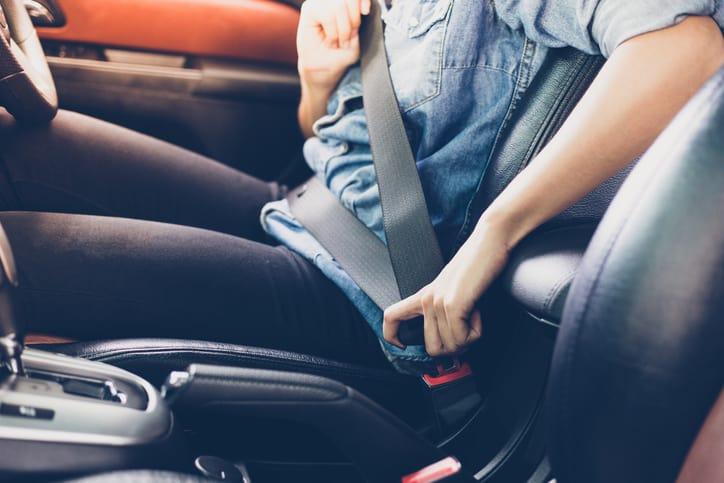

(844) - 444-4444

The aftermath of a New York car crash can seem overwhelming. One second you are behind the wheel, traversing along to a familiar destination, the next you are surrounded by a cage of twisted metal.
When the smoke clears and the responding officer leaves it might feel like you are still enshrouded in a cloud of uncertainty.
Things you once took for granted are no longer a given. Can you still go to work on Monday? Can you still go on those family walks in the park? What about that vacation planned for next month?
If I can’t pick up where I left off and resume my life, what options are available to me?
The haze of uncertainty may linger for the next few weeks or even months. Questions will be asked by insurance adjusters and the mailbox may overflow with letters and forms from different insurance companies. If the crash was due to the negligence of another motorist and you sustained a serious injury under New York, you may be entitled to compensation for pain and suffering. If you seek to pursue that claim, one question you will surely confront at some point is whether you were wearing your seatbelt at the time of the crash.
As of November 1, 2020, all motor vehicle passengers in New York State must wear a seatbelt. That means that vehicle passengers and operators who do not wear a seatbelt can receive a citation for violating the Vehicle and Traffic Law. Failure to wear a seatbelt is not only against the law, but it can also potentially reduce the amount of damages that can be recovered in a personal injury action.
The law in New York State is clear. Safety restraints are not optional; they are required, and motorist should familiarize with the details of the state’s seatbelt laws. According to statistics compiled by the National Highway Traffic Safety Administration (NHTSA), seat belt use in passenger cars saved nearly 15,000 lives in 2017. Half of passenger vehicle occupants killed in 2021 were not restrained.
Under these circumstances you may ask yourself, “what if I didn’t wear my seatbelt?” “Can I still assert a personal injury claim and receive compensation for my pain and suffering?” The answer is “Yes,” a successful personal injury claim can still be pursued. There is a small caveat, but someone who makes the unfortunate mistake of not wearing a safety restraint is not entirely shut out from a recovery for pain and suffering if it was directly caused by another motorist on the road.
As we have covered in these pages, New York is a comparative fault jurisdiction, meaning that if someone engages in conduct which causes or contributes to their own injuries, that person can still receive a recovery but it will be reduced in proportion to their share of fault.
New York courts have recognized a so-called “seat belt defense” which is slightly different but operates in much the same way. An attorney hired by the insurance company may try to cast blame on an injured New York motorist, arguing that failure to wear a seatbelt was the sole cause of injury. In effect, that attorney may try to argue that, regardless of the insured’s fault in causing the crash, resulting injuries were actually caused from the lack of seatbelt restraint. In other words, had the seatbelt been used, no injuries would’ve actually resulted from the crash. This “seatbelt defense” is an affirmative defense, meaning the attorney hired by the insurance company must actually prove this in a court of law. In technical terms, this sort of defense is known as a “failure to mitigate damages.”
If an insurance company tries to tell you that you are absolutely not entitled to pain and suffering because you were not wearing your seatbelt at the time of the crash, that is untrue. An experienced New York personal injury attorney can examine the unique facts of any car crash case to help overcome this “seatbelt defense,” should it be asserted. Someone who makes the unfortunate mistake of not wearing a seatbelt should still be made whole for pain and suffering caused by another.
According to the NHTSA, in 2021 the national seat belt use rate was approximately 90%. The consequences of not wearing a seat belt can be grave. Over half of the passenger vehicle occupants killed in 2020 were unrestrained, representing a four-percent increase from the previous year.
Violating New York State’s seatbelt laws can result in a range of penalties, including fines and driver’s license penalty points. In the event of a car accident that causes personal injury, it can also potentially reduce the recovery in a personal injury lawsuit. New York courts have held that a motor vehicle driver or passenger who fails to wear a seatbelt may have their personal injury recovery reduced. The person who caused the accident, even if they were at fault, can raise an “affirmative defense” that the injured person, by declining to use an available seatbelt, failed to mitigate damages. To be sure, a failure to wear a seatbelt does not mean that there is no case. It just means that the case may face an additional defense at trial. An experienced personal injury attorney can examine the facts of any case and recommend the best course of action.
The experienced attorneys at William Mattar, P.C. have helped New York motorists maximize recovery for pain and suffering. They have the knowledge and experience to identify and overcome affirmative defenses like the “seat belt defense.” If you are looking for an experienced New York personal injury lawyer, please do not hesitate to contact our office. Call (844) 444-4444 today.





